Dec. 2012 Tip of the Month – When to Upgrade Your Camera
Upgrading to the latest technology is fun and gives you new photographic options, but beyond this, when should you upgrade, and why?
Here’s my take. Since my first digital camera, bought back in the year 2000 (a Canon G1, 3MP, that still works great), I have upgraded for one reason:
I upgrade when I find myself trying to create photographs that the camera can’t capture. That’s it.
When you find yourself frustrated because you are missing opportunities due the limitations of the camera, consult a professional about what you are seeking to accomplish with your photography. Sometimes this will result in learning new features of your camera, but often it means an upgrade, and a whole new world of photographic possibility.
The benefits of a wide brimmed hat
I grew up wearing wide brimmed hats made of beautiful pine-green felt. At Boy Scout Jamborees this hat lent such an air of authority that I found myself continually mistaken for senior scouting staff, to the great admiration (and occasional advantage) of my peers. My hat is now as integral a part of my gear as my boots and the camera itself. When you spend day after day in the field, no piece of head gear is as versatile.
When I became a photographer, I discovered a whole new array of uses.
Sun hat. This might seem obvious, but no another hat or hood shades your face, ears, and neck quite as well while allowing you full range of vision and hearing.
Rain hat. Raincoat hoods are noisy and damp in the rain. A wide brim is your personal umbrella, open and comfortable.
Snow hat. Provided it isn’t too cold, nothing does as well keeping the snow out of your face and eyes, and from going down the back of your neck.
Protects you (and your camera if necessary) from hail and ice falling from trees.
Lens shade. Keep the sun off the lens face. The sharp shadow edge can be placed precisely across the lens face for shots to sunward to eliminate flare without getting the hat in the picture.
Keep rain and snow off the lens and/or camera. Hold over the lens face, or set the hat on the camera like a camera hat.
Shade the LCD in bright sun. (while keeping your hands free)
Backdrop for macro photography.
Wind block for camera to reduce camera shake.
Handy container for a lens swap when away from your bag.
Keeps rain and snow off your glasses (if you wear them).
Shelters the eye pieces of binoculars around your neck from rain and snow.
Handy container for berry picking. Put a cloth in the bowl to avoid staining the inside with berry juice.
No Sunglasses Needed. I don’t carry sunglasses in the field. A side benefit is viewing the landscape in true color all the time.
Snoozing shelter. Cat naps are an integral part of north latitude summer photography. The sun rises at 5am and sets at 10pm, so you are up at 4am and get to bed at midnight or later. Covering your eyes with a shirt or coat isn’t half as pleasant (or as cool looking) as slipping that brim down for a quick snooze. It’s also easy to check your surroundings before moving when a strange sound wakes you up. (The strangest sound to wake me from a photo cat nap was the growling of my assistant’s stomach. It woke him too, but he wouldn’t admit it.)
On Cross-Country Travel
My father said, “Find the car, Bors.” I was six, and it was my responsibility to take the family back to the vehicle. On the walk out, my father had been pointing out landmarks, asking me which way was north, and having me turn around to see what our back-trail looked like. I set off with purpose, following these clues. After a while I got stumped, so I climbed a tree for a look around. I could see the parking lot in the distance. I’d been going in the right direction, and proudly led my parents to our green and white 1972 Toyota Landcruiser.
Two years later, on a warm summer day, my father led the family on a long walk. The path he took was giant half-loop, one-half of a circle. “Ok, Bors, find the car. Complete the circle.” There’d been no advice on the walk out this time. The area was new to me, and we were well away from any trails. Setting out, I completed the circle in terrain I’d never seen before, bringing my parents out of the woods within a hundred yards of where the car was parked.
“Bors, you can go out whenever you want,” said my father. He meant that I could go exploring in the woods without parental supervision, anytime, anywhere. He knew that I would never get lost. I never have. That being said, I did once doubt the veracity of the earth’s magnetic field, but that’s a story of its own.
Much of my photographic work is created off trail. If you also choose to walk into the woods in pursuit of light, here are some techniques that will enable you to do so successfully.
- Back-trail. Turn around and memorize the look of where you just came from. Continually. This is the single most important technique for getting back out of anywhere. If you have a series of ‘sight-pictures’ of your back-trail, you can always return the way you came. When I’m on multi-day treks off trail, I put my self to sleep each night by traveling backward along the route in my mind. The more rugged the terrain, the more important this becomes.
- Landmarks. Note the unique aspects of the terrain around you, and their relationship to one another. Mountain peaks, a lightning struck tree, the rocks in a dry wash, a meadow, the direction of the sound of the river, etc.
- North awareness. When you get out of the car, ask yourself which way is north. This is a great thing to do with friends. Have each one point their north, then check it against a compass. Do this on a regular basis as you go.
- Sun awareness. What time of day is it? Where is the sun in relation to the terrain? In relation to North? Where will it be, which way is it traveling? Note its position as you go in the same way you note your back-trail. It’s one of your best nav aids, but unlike landmarks, it moves!
- Memorize the map. Study a map of the area before you go. (This assumes you know how to interpret and visualize real terrain from map contours and features. If you can’t do this yet, then move map reading practice to item number 1.)
Successful off trail travel is about creating and maintaining a terrain map in your mind that is oriented correctly to the earth. A paper map doesn’t help unless you already know where you are. The most important map is the one in your head, the one you created on your walk in. The most detailed contour map won’t tell you how to get back to that big tree you used to cross the river.
These points only scratch the surface. What they do not teach is route finding, wilderness safety, critter awareness (snakes, bears, cougars), how to walk a rockfall, ford a stream, and so much more. With practice, what they will do is help you find your way back to the car with ease.
Happy trails.
Article published on The Luminous Landscape
I’m pleased to report that my article, Dynamic Patience has been chosen by Michael Reichmann for publication on The Luminous Landscape. For those not familiar, LuLa is the premier news and information hub for landscape photography world wide.
http://www.luminous-landscape.com/essays/dynamic_patience.shtml
For your own personal copy of this article, subscribe to my mailing list on any page on the site. I produce a monthly newsletter with trip reports, new work, and other news.
Why am I a Photographer?
In a conversation about life and career a friend asked me, “Why photography?”
I do photography for everyone who enjoys my work. I see things in the mountains; Visions. Stories written with light. Beauty so elemental that it stops you in your tracks. I want people to be able to own those visions, to have them on their walls, to be able go there whenever they wish.
The second question was, “Why make prints? You could be a National Geographic photographer with work like this.”
The print is the ultimate expression of photographic skill and artistry. Prints allow people to own the visions I create.
“Fine Art, right?”
Yes, but that term is over used these days. A truly fine print has substance. Everything about it speaks to its quality. Each element of the piece comes together to create a whole greater than the simple sum of its parts.
The paper is of the highest grade. The mounting and framing use techniques and materials pioneered by museums for the preservation of historical works. Within the art itself are layers of meaning. You can look at a fine print again and again, seeing new things each time. A fine print contains metaphoric meaning, sometimes more than one. It can speak of peace, adventure, freedom, intimacy, or tell a story. Fine prints have a luminosity that draws you into them. In short, fine prints are collection worthy on every level.
Reifel Migratory Bird Sanctuary
Today, Sandhill cranes walked right up to us and posed for portraits.
January 2012 Print of the Month
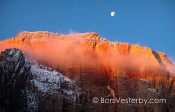
Happy New Year!
January Print of the Month is Moon, Mist, and Mountain.
Mother nature favors the prepared mind. Last year, during a summer visit to Zion National Park I put this image together in my mind’s eye, complete with snow and moon.
To make that pre-visualization into a print, four conditions would need to come together in perfect sync –
1) A moon-set at dawn
2) Intense alpen-glow
3) Fresh snow to lend structure and scale
4) I would have to be there when all of this happened
Three weeks ago, after a year and a half of anticipation and planning, the elements came together for a few seconds. This is one of the most exciting and rewarding moments in photographic work.
Utah in winter
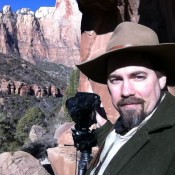
North east out of Vegas, you follow a long vast valley scattered with Joshua trees and not much else, until the highway meets the Virgin River. The Virgin River Gorge is a gateway, literally and figuratively. The Virgin River originates in Zion National Park, and I am pleased to greet it out here in the Mohave desert. It took much longer to get out of Vegas than intended, so I stopped off at Snow Canyon State Park for the night. From there I found that state route 14 was closed, so I headed north and to 20 over the pass. Unknowingly, I’m driving into a winter storm dropping four times the amount of snow expected. Six hours into this lovely weather, I decide that lower elevation is the thing for me, for I have made the mistake of taking a rear wheel campervan up onto the high Colorado Plateau in late December. Leaving Bryce Canyon for another day (and 4WD), I went south to Zion.
I have chosen an image created on this expedition for the January Print of the month. I’ll post it next week to bring in the New Year.
Merry Christmas!
December 2011 Print of the Month
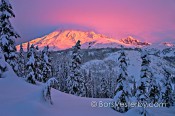
Click here to view Print number 1, Between Storms
Each month a new print will be added to the Print of the Month Collection, at a $20 discount for the month. Shipping is free for Print of the Month. Invest now, as the price of this piece will never be lower! Next month the 16×20″ print of this piece will return to its regular $99 matted and $199 framed pricing. Invest safely and easily with Paypal.
Upcoming expedtion to Utah
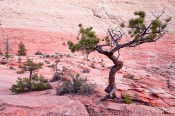
The west is a land of desert sage, pacific fog, oak hills, temperate rainforest – big sky, high mountains, and roaring rivers. Of all this landscape, one region stands apart for breadth of unique locations.
While the Rocky Mountains were getting lifted toward the sky, this section of the west remained in place, slowly weathering. The shapes of this region are born of massive deposits of sediment, some of which were laid down half a billion years ago.
The area is the Colorado Plateau, and I’ll be there next week. All that is needed is a good storm for fresh snow. Stay tuned…
Follow my expeditions as they happen, subscribe to “Tweets from the Field” on Twitter.
Follow @BorsVesterby

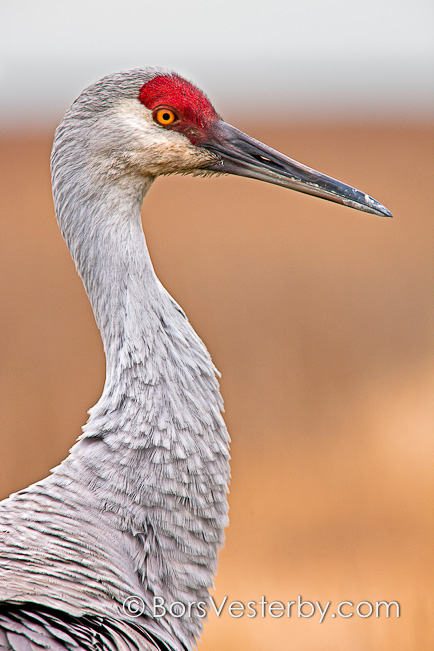
 Tweets from the Field
Tweets from the Field